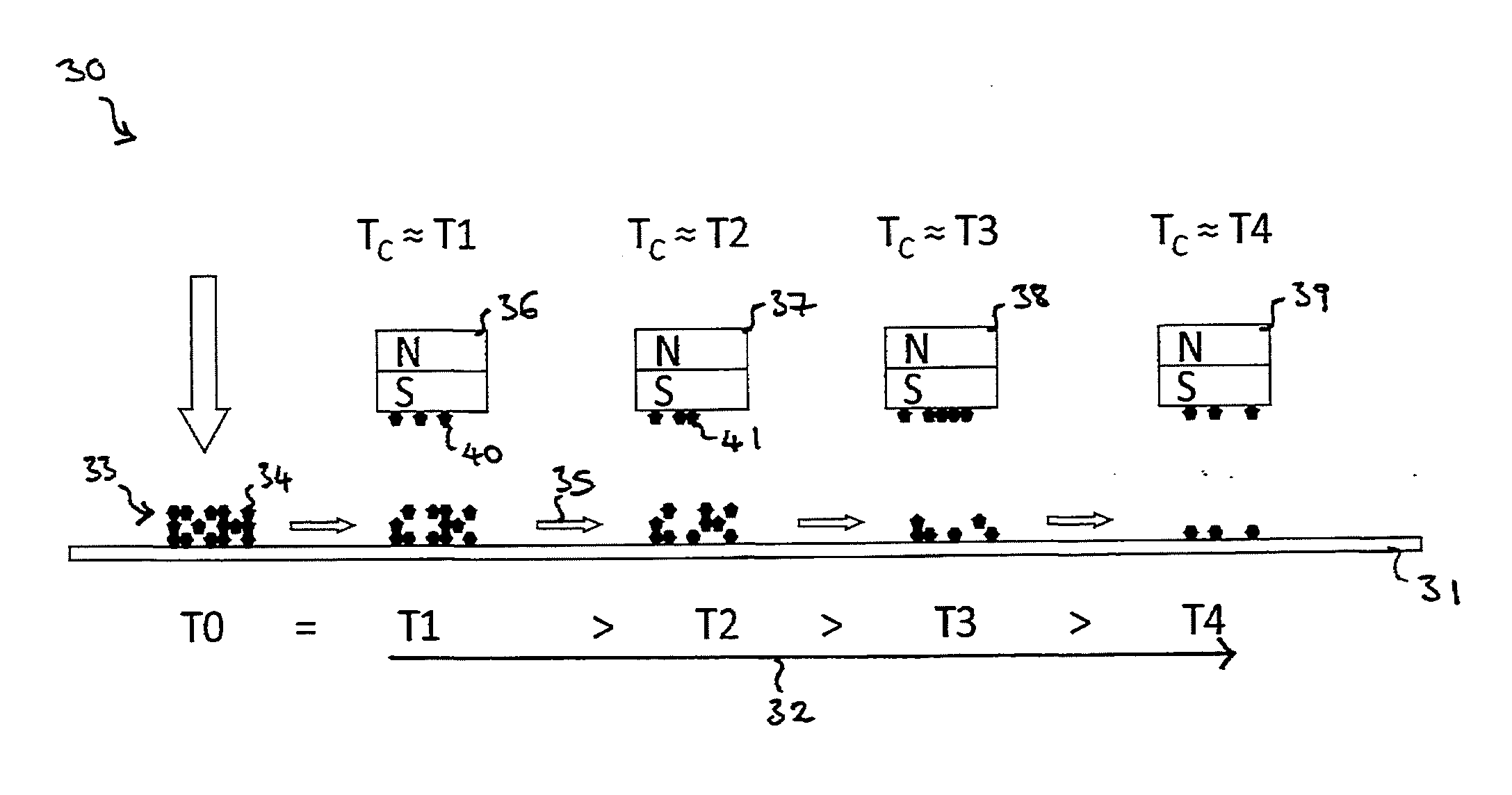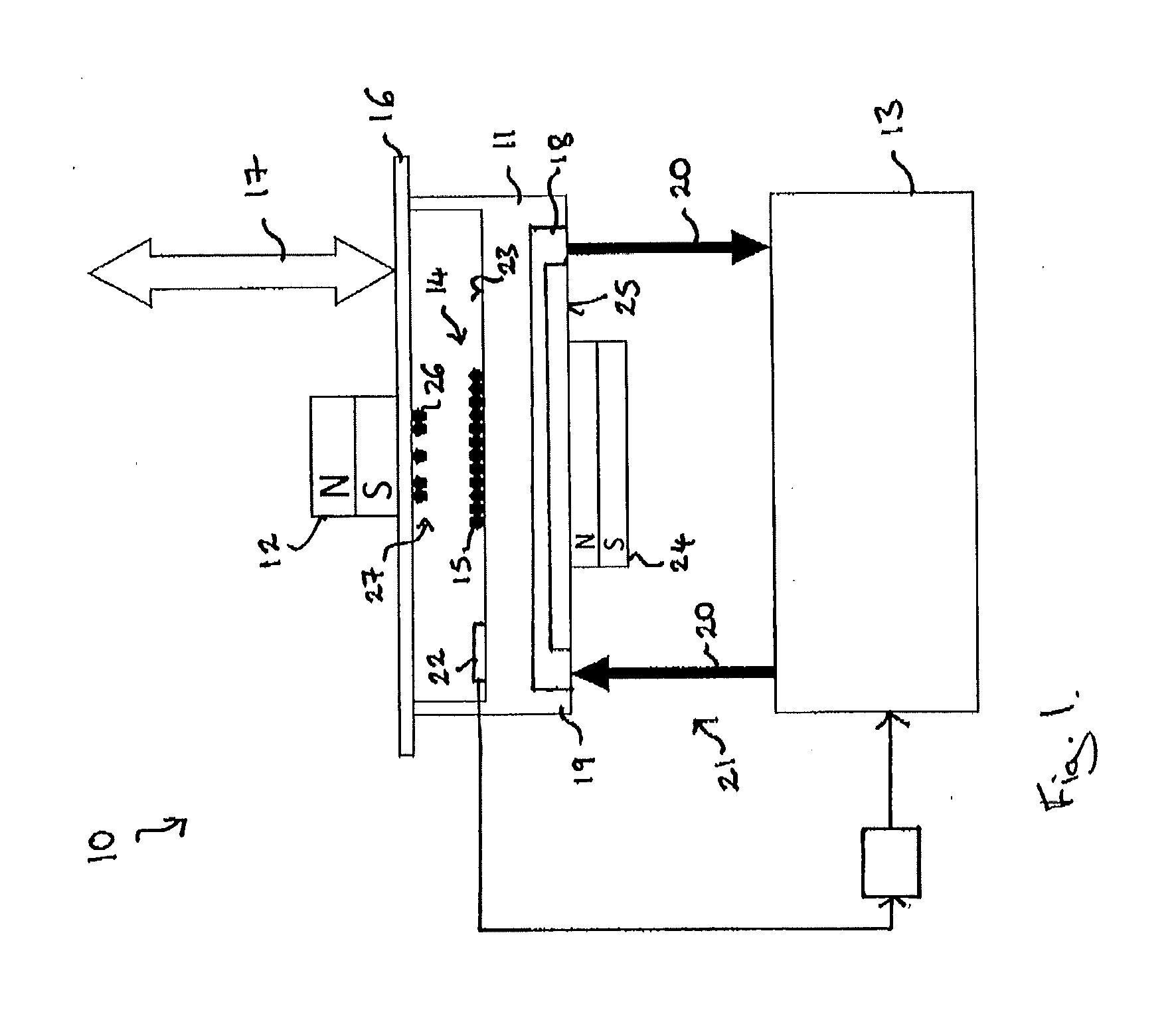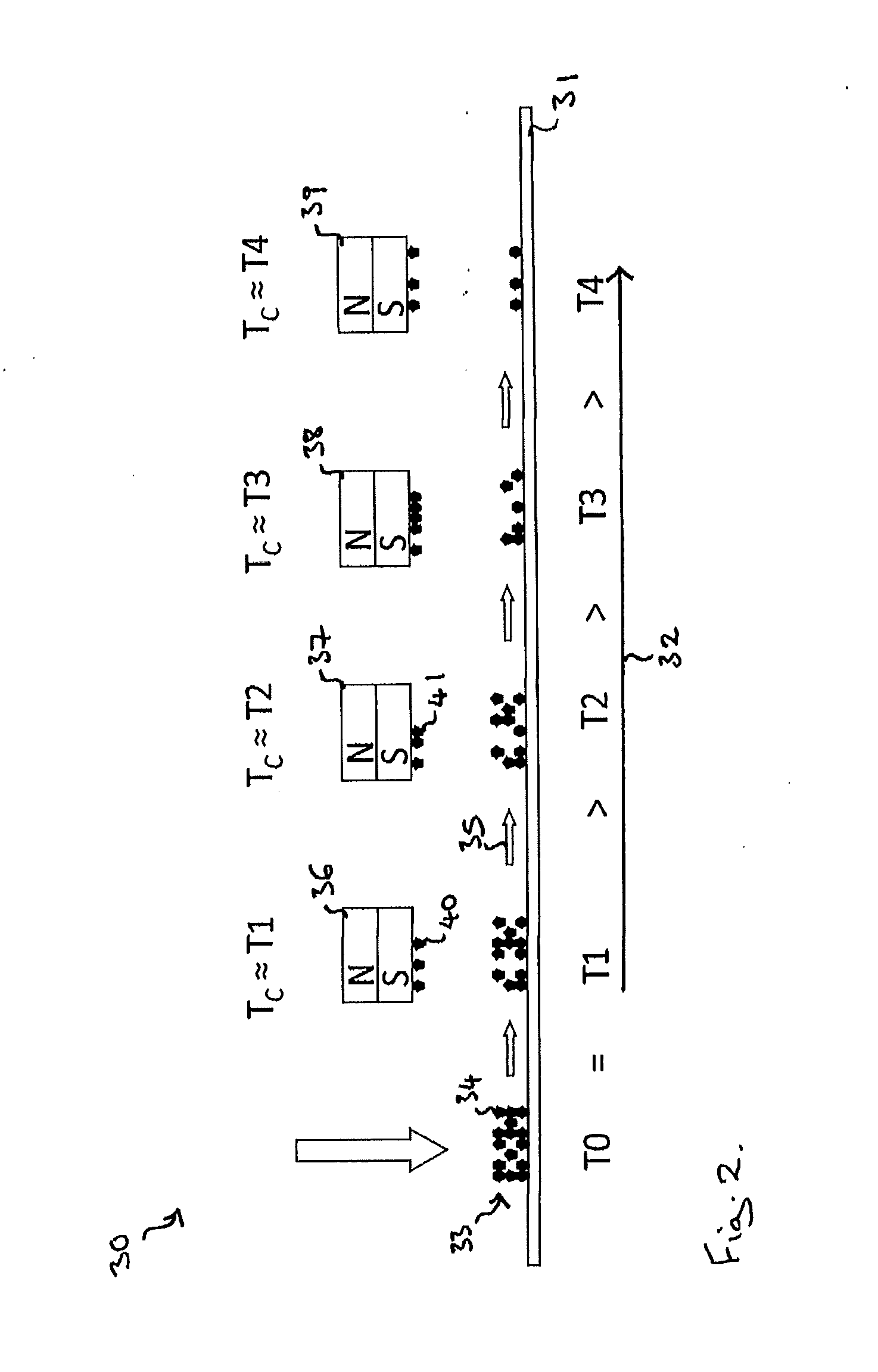Method for classifying articles and method for fabricating a magnetocalorically active working component for magnetic heat exchange
a technology of working component and magnetic heat exchange, which is applied in the field of classifying articles, can solve problems such as heat dissipation, and achieve the effects of increasing the efficiency of the magnetic heat exchanger, increasing the efficiency of the working component comprising these layers of different magnetic transition temperature, and small magnetic transition temperature rang
- Summary
- Abstract
- Description
- Claims
- Application Information
AI Technical Summary
Benefits of technology
Problems solved by technology
Method used
Image
Examples
first embodiment
[0069]FIG. 1 illustrates apparatus 10 for classifying magnetocalorically active particles using thermomagnetic separation.
[0070]The apparatus 10 comprises a container 11, which is thermally conductive and non-magnetic, a magnet 12 and means for adjusting the temperature of the container 11 in the form of a bath 13 which can be heated or cooled to adjust the temperature of the container 11. The container 11 is open on its upper side and may comprise copper.
[0071]The source 14 of magnetocalorically active particles 15 which are to be classified are placed in the thermally conductive container 11. The source 14 comprises a plurality of particles 15 comprising magnetocalorically active materials having differing magnetic transition temperatures. In this embodiment, the majority of the particles 15 comprise magnetocalorically active material. However, some impurity particles may also be present which do not include magnetocalorically active material.
[0072]In one particular embodiment, t...
second embodiment
[0082]FIG. 2 illustrates apparatus 30 which is used to classify magnetocalorically active particles.
[0083]The apparatus 30 comprises a band 31 and a temperature gradient 32. A source 33 comprising particles 34 of magnetocalorically active material which are to be classified, is trans-ported through the temperature gradient 32 by movement of the band 31. In this particular embodiment, the band 31 vibrates in order to move the source 33 through the temperature gradient 32 in direction of the arrow 35.
[0084]In other embodiments, the band 31 may move the source 33 along the temperature gradient 32 by movement of the band 31 in the direction of the temperature gradient 32. The band 31 may be a conveyor belt, for example.
[0085]The apparatus 30 further comprises a plurality of magnets 36, 37, 38, 39 which are spaced at intervals along the length of the band 31. Each of the plurality of magnets 36, 37, 38, 39 is positioned above the band 31 at a different temperature due to the temperature...
PUM
| Property | Measurement | Unit |
|---|---|---|
| magnetic field | aaaaa | aaaaa |
| magnetic field | aaaaa | aaaaa |
| diameter | aaaaa | aaaaa |
Abstract
Description
Claims
Application Information
 Login to View More
Login to View More - R&D
- Intellectual Property
- Life Sciences
- Materials
- Tech Scout
- Unparalleled Data Quality
- Higher Quality Content
- 60% Fewer Hallucinations
Browse by: Latest US Patents, China's latest patents, Technical Efficacy Thesaurus, Application Domain, Technology Topic, Popular Technical Reports.
© 2025 PatSnap. All rights reserved.Legal|Privacy policy|Modern Slavery Act Transparency Statement|Sitemap|About US| Contact US: help@patsnap.com



